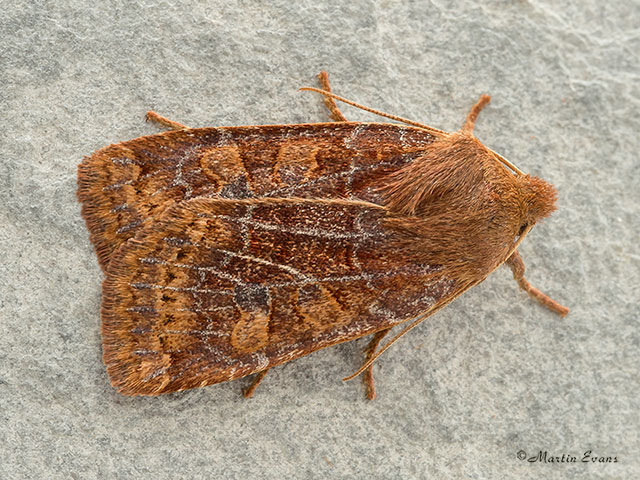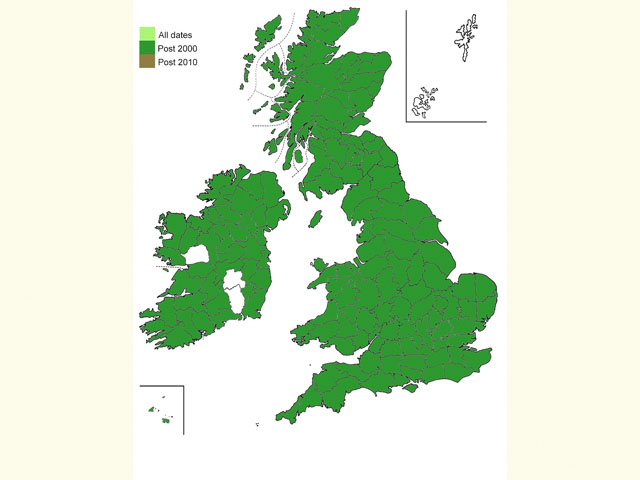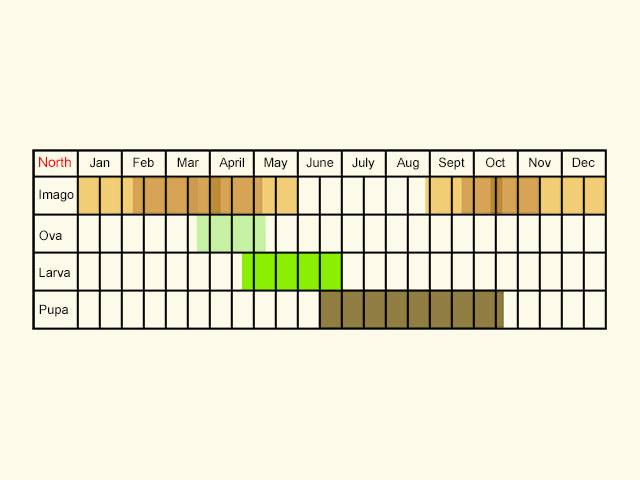Noctuidae
73.194 Chestnut Conistra vaccinii (Linnaeus, 1761)
Common
Similar species: Dark Chestnut Conistra ligula has a straight or slightly concave outer edge to the forewing, rather than slightly rounded.
Forewing: 14 to 15mm
Habitats: Deciduous woodland, heathland scrub, downland scrub, hedgerows and gardens.
Habits: The moth visits Ivy blossom and in the spring sallow catkins. It is attracted to light and sugar, especially the females in the spring.
Foodplant: The polyphagous larva feeds mainly at night on the leaves of oaks, elms, Sweet Chestnut, Downy Birch, Blackthorn, Hawthorn and other deciduous trees, and later herbaceous plants such as docks and Dandelion. The full-fed larva constructs a soil-covered cocoon under the earth where it rests until it pupates up to eight weeks later.
On the European mainland it has also been recorded feeding on Poplar, Apple, Bird Cherry, Bramble, currants and occasionally Bilberry.










